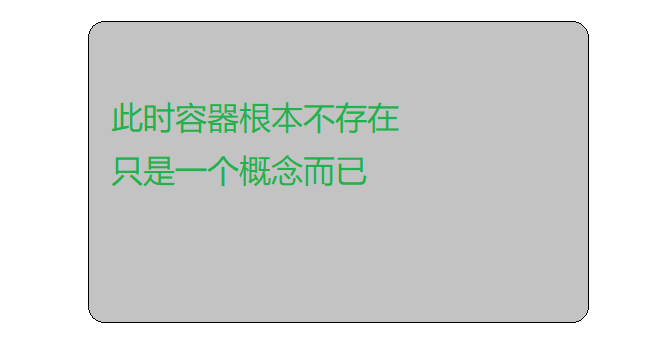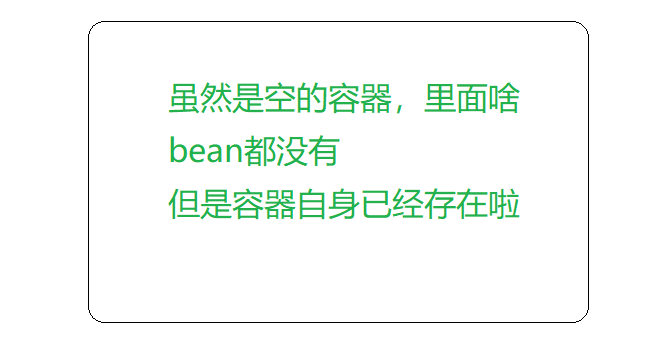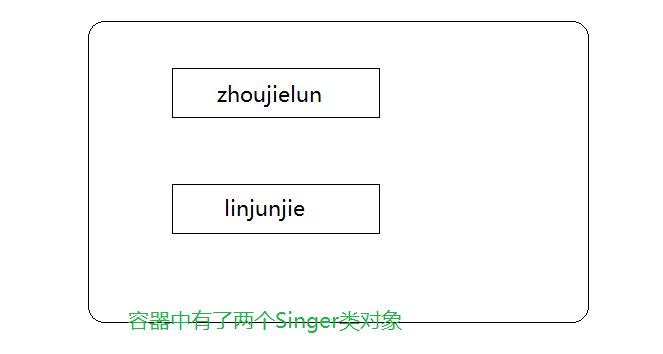背景
之前讲过了如何使用xml定义spring容器中的bean,简简单单几行代码就可以实现,但是后面的道理可没那么简单,今天咱们就来好好絮叨絮叨,xml定义bean时到底发生了啥。
round1 容器还不存在
最开始的时候,我们使用xml定义下我们的容器,但是容器中啥也没有。
<?xml version="1.0" encoding="UTF-8"?><!-- spring.xml文件-->
<beans xmlns="http://www.springframework.org/schema/beans"
xmlns:xsi="http://www.w3.org/2001/XMLSchema-instance"
xsi:schemaLocation="http://www.springframework.org/schema/beans
http://www.springframework.org/schema/beans/spring-beans.xsd">
<!-- 容器中啥也没有 -->
</beans>
注意此时程序都没运行,所以内存中是混沌状态,如下:
round2 空的容器
当我们运行下面一行代码时,spring框架就会为我们生成一个容器,因为spring.xml中并未定义bean,所以这时候会生成一个空的容器,里面没有任何bean(对象),context实际上就是指向容器的引用。
package org.maoge.xmlbeandetail;
import org.springframework.context.support.ClassPathXmlApplicationContext;
public class Main {
public static void main(String[] args) {
ClassPathXmlApplicationContext context = new ClassPathXmlApplicationContext(
"/org/maoge/xmlbeandetail/spring.xml");//注意,说的就是这一行
}
}
总结下,上面一行代码的意思就是根据spring.xml的定义,生成一个容器对象context,此时内存中的状态如下:
round3 要办年会,搞什么节目捏
要么就唱歌、要么就请几个讲相声的,最后领导拍板还是请歌手吧。来定义一个歌手类如下,普普通通的歌手类,没啥好说的。
package org.maoge.xmlbeandetail;
public class Singer {
private String name;
public void sing() {
System.out.println("歌手[" + name + "]开唱啦,快挥舞起你手中的荧光棒吧");
}
public String getName() {
return name;
}
public void setName(String name) {
this.name = name;
}
}
此时容器中依然还是空的哦!世界上虽然有很多歌手,但是到目前为止跟咱们的容器没有任何关系!
round4 确定邀请哪些歌手
要请歌手,公司员工中80/90后居多,经过全体员工投票,最后得分最高的是周杰伦和林俊杰。本公司真是土豪啊有钱啊牛X啊,为何如此厉害?(PS:主要是程序里面随便定义个数字赋值个几百万上亿都是小事,哈哈,程序员的世界程序员就是无敌!)
OK,我们在容器中定义一下要请的对象。
<?xml version="1.0" encoding="UTF-8"?><!-- spring.xml文件 -->
<beans xmlns="http://www.springframework.org/schema/beans"
xmlns:xsi="http://www.w3.org/2001/XMLSchema-instance"
xsi:schemaLocation="http://www.springframework.org/schema/beans
http://www.springframework.org/schema/beans/spring-beans.xsd">
<bean id="zhoujielun" class="org.maoge.xmlbeandetail.Singer">
<property name="name" value="周杰伦"></property>
</bean>
<bean id="linjunjie" class="org.maoge.xmlbeandetail.Singer">
<property name="name" value="林俊杰"></property>
</bean>
</beans>
当再次运行ClassPathXmlApplicationContext context = new ClassPathXmlApplicationContext( "/org/maoge/xmlbeandetail/spring.xml");这一行代码时,spring框架会扫描spring.xml文件,发现已经配置了两个Singer类的对象,所以在容器生成时里面会添加两个对象,如下图:
round5 嗨!唱起来
万事俱备,只欠东风了,行动起来。
package org.maoge.xmlbeandetail;
import org.springframework.context.support.ClassPathXmlApplicationContext;
public class Main {
public static void main(String[] args) {
ClassPathXmlApplicationContext context = new ClassPathXmlApplicationContext(
"/org/maoge/xmlbeandetail/spring.xml");
// 杰伦来了
Singer zhoujielun = context.getBean("zhoujielun", Singer.class);
zhoujielun.sing();
// 俊杰来了
Singer linjunjie = context.getBean("linjunjie", Singer.class);
linjunjie.sing();
}
}
此时就是让内存中对象执行它们的方法就行了:
人治改法治是巨大进步
通过xml文件定义容器和容器中的对象及对象的属性信息,然后启动容器时就会自动加载对象了,对象的整个生命周期由容器管理。对象的生成由程序员控制变为了容器控制,就像传说中的人治改为按文件规定(xml),非常规范,实际上好处多多,后续大家会慢慢体会到的!
元数据
实际上xml的数据是一种描述和定义,用来向Spring容器提供配置定义相关的信息,这种数据被称为元数据。
元数据可以是任意形式,例如xml、json、二进制数据都可以,只要能描述清楚信息就可以了。
Spring框架目前支持三种元数据:xml、annotation(注解)、java config(java配置),实际上就是三种描述Spring容器内信息的数据格式,可以根据用户自己的喜爱或者需要灵活使用。
就像出行,你既可以乘飞机也可以坐高铁,如果你开心,骑共享单车也不错。
而我,喜欢自驾游,老弟,稳!
共同学习,写下你的评论
评论加载中...
作者其他优质文章









